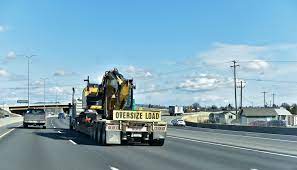Shipping is challenging, especially with oversized objects. Why is anything oversized? Regular cargo has weight, height, and size dimensions. Anything that deviates from the norm is deemed large.
Oversized goods include things like automobiles, military equipment, and construction machinery. You must exercise attention when sending such things in order to prevent mishaps and overspending.
Read the post of Ship a Car, Inc. at the website address https://www.shipacarinc.com/oversized-loads-101-over-dimensional-freight-shipping-best-practices-and-considerations/ to know more information on this topic.
Key considerations for any oversized loads and wide loads
When preparing to move any flatbed load, it is imperative to be aware of the exact dimensions and weight of your consignment. The following are the top 5 things shippers need to consider before transporting a large or wide load:
- Know your flatbed loads legal limits
The restrictions on shipping in the USA are generally the same from state to state and are relatively well recognized. This flatbed equipment manual contains a list of the regulations for all types of flatbed trailers.
- How to find out whether your load is oversized
Weight restrictions are determined by each axle. A shipment may transgress the per-axle limitations even if the total weight restriction is not exceeded. In this case, simply changing the load can make the cargo legal without the need for additional approvals.
- Learn the various rules while you require travel escorts
For shipments that are broader than 12 feet, many states require travel escorts. In addition to variable per-mile fees, shippers typically pay for hotels and other incidentals, or “accessorials,” which are accounted for in the total freight costs.
It is the responsibility of travel escorts to warn flatbed drivers of unusual circumstances including traffic jams, construction zones, bridges, low wires, accidents, and other hazards that necessitate defensive driving. They also alert people to the presence of a big truck.
- Understand those factors that may impact your schedule
Most jurisdictions only let large loads to be on the road from half an hour before sunrise to half an hour after sunset, Monday all the way through Friday. Many states have laws that prohibit or restrict driving on holidays and weekends.
Drivers must have permits with detailed instructions for each state they visit before they can put a load on the road. Each of these factors, especially the drive time constraints, poses unique challenges for shippers trying to adhere to schedules.
- Know the proper meaning and requirements for your special marketing
Depending on the size of the object being transported, flags or lights may be required on the tractor or trailer. Big loads often need to be marked with red flags and amber lights to provide visibility to other drivers.
For travel escorts conveying a large shipment, flags and/or lights are frequently required.
Final thoughts
Even though it can be challenging, there are times when it is the most efficient way to move all of your stuff. The rules and laws governing the transportation of large loads must be adhered to. Your oversize cargoes will be safe and compliant if you follow the best practices that were discussed above.




